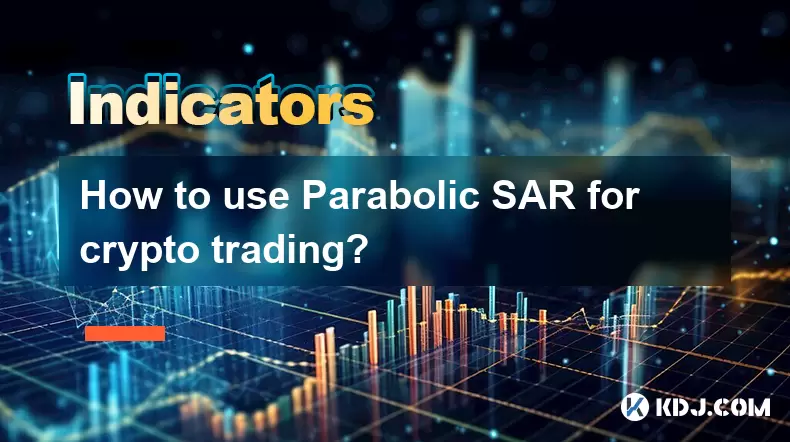-
 Bitcoin
Bitcoin $120400
1.77% -
 Ethereum
Ethereum $3615
7.90% -
 XRP
XRP $3.580
17.84% -
 Tether USDt
Tether USDt $1.001
0.06% -
 BNB
BNB $729.4
1.25% -
 Solana
Solana $179.9
5.04% -
 USDC
USDC $0.0000
0.01% -
 Dogecoin
Dogecoin $0.2311
8.22% -
 TRON
TRON $0.3226
4.04% -
 Cardano
Cardano $0.8490
12.85% -
 Hyperliquid
Hyperliquid $46.45
0.72% -
 Stellar
Stellar $0.4913
8.54% -
 Sui
Sui $4.027
2.00% -
 Chainlink
Chainlink $18.51
11.67% -
 Hedera
Hedera $0.2818
21.51% -
 Avalanche
Avalanche $24.03
7.40% -
 Bitcoin Cash
Bitcoin Cash $508.5
2.90% -
 Shiba Inu
Shiba Inu $0.00001496
3.24% -
 UNUS SED LEO
UNUS SED LEO $8.961
1.83% -
 Toncoin
Toncoin $3.264
3.13% -
 Litecoin
Litecoin $104.6
8.15% -
 Polkadot
Polkadot $4.389
6.11% -
 Uniswap
Uniswap $9.924
10.63% -
 Monero
Monero $337.9
0.49% -
 Pepe
Pepe $0.00001376
2.79% -
 Bitget Token
Bitget Token $4.830
2.46% -
 Ethena USDe
Ethena USDe $1.001
0.05% -
 Dai
Dai $1.000
0.02% -
 Aave
Aave $325.2
1.66% -
 Bittensor
Bittensor $423.7
-0.85%
How to use Parabolic SAR for crypto trading?
Parabolic SAR helps crypto traders spot trend reversals by placing dots above or below price charts, signaling when to buy, sell, or reverse positions.
Jul 15, 2025 at 02:07 am

Understanding the Basics of Parabolic SAR
Parabolic SAR (Stop and Reverse) is a technical analysis tool used to determine the direction of an asset's momentum and identify potential reversals in price. Developed by J. Welles Wilder, it is especially useful in trending markets. In crypto trading, where volatility is high and trends can reverse quickly, understanding how to interpret the Parabolic SAR signals becomes crucial.
The indicator appears as a series of dots placed either above or below the price chart. When the dots are below the price, it indicates an uptrend, suggesting that traders should consider buying or holding. Conversely, when the dots are above the price, it signals a downtrend, prompting traders to sell or short.
Important: The accuracy of Parabolic SAR increases significantly when used alongside other indicators like moving averages or RSI.
Setting Up Parabolic SAR on Trading Platforms
Most modern crypto trading platforms like Binance, Coinbase, or TradingView support the Parabolic SAR indicator. To apply it:
- Open your preferred trading platform
- Navigate to the chart section
- Click on the indicators or studies button
- Search for "Parabolic SAR"
- Select and apply it to your chart
Once applied, you'll see small dots forming either above or below the candlesticks. Adjusting the settings may help in reducing false signals. The default parameters are usually set at 0.02 acceleration factor and 0.2 maximum, but advanced traders often tweak these values depending on the market conditions and timeframes they are analyzing.
Tip: For more sensitive signals, increase the acceleration factor slightly. However, this might lead to more false reversals.
Interpreting Parabolic SAR Signals in Crypto Charts
In crypto charts, the Parabolic SAR provides clear visual cues about trend reversal points. Here’s how to interpret them:
- When the dots switch from above to below the price, it signals a potential bullish reversal.
- When the dots move from below to above the price, it suggests a bearish reversal.
These shifts indicate that traders should consider changing their position accordingly. It's important to note that during sideways or range-bound markets, the Parabolic SAR tends to generate whipsaw signals, which can mislead traders if not used carefully.
Caution: Always confirm Parabolic SAR signals with volume spikes or other confirming indicators before making a trade decision.
Combining Parabolic SAR with Other Indicators
To enhance the reliability of Parabolic SAR in crypto trading, combine it with complementary tools such as:
- Moving Averages (MA): Use a 50-period and 200-period MA to confirm the strength of the trend.
- Relative Strength Index (RSI): Helps identify overbought or oversold conditions, which can validate potential reversals.
- Volume indicators: Sudden spikes in volume can confirm the validity of a Parabolic SAR signal.
For instance, if the Parabolic SAR flips below the price and the RSI crosses above 50 from below, this combination strengthens the case for a long position.
Pro tip: Using a multi-timeframe approach can also filter out noise and improve entry/exit timing.
Practical Examples of Parabolic SAR in Crypto Trading
Let’s take a real-world example using Bitcoin (BTC) on a 4-hour chart:
- On a specific day, BTC starts rising after a consolidation phase. The Parabolic SAR dots appear below the candles, indicating an uptrend.
- As the rally continues, the dots remain beneath the price, encouraging traders to stay long.
- After a few days, BTC reaches a resistance level. Suddenly, the dots flip above the price, signaling a possible reversal.
- Traders who were long start closing positions or opening shorts based on this signal.
Another example involves Ethereum (ETH) during a choppy market phase. Here, the Parabolic SAR generates multiple reversal signals, but none of them result in strong trends. This illustrates why it's essential to use the indicator only during trending phases.
Lesson learned: Avoid relying solely on Parabolic SAR in ranging or volatile markets without confirmation from other sources.
Frequently Asked Questions (FAQs)
Q: Can Parabolic SAR be used for all cryptocurrencies?
A: Yes, Parabolic SAR can be applied to any cryptocurrency chart available on supported platforms. However, its effectiveness varies depending on the asset’s liquidity and volatility.
Q: Is Parabolic SAR suitable for intraday trading in crypto?
A: While it can be used for intraday trading, frequent reversals on smaller timeframes may produce unreliable signals. It performs better on hourly or daily charts.
Q: How do I adjust Parabolic SAR settings for different crypto pairs?
A: You can tweak the acceleration factor and max step based on the pair’s volatility. Higher volatility assets may benefit from slower settings to reduce false signals.
Q: Does Parabolic SAR work well in bear markets?
A: Yes, it helps identify potential shorting opportunities when the dots appear above the price. However, always verify with additional tools to avoid premature exits.
Disclaimer:info@kdj.com
The information provided is not trading advice. kdj.com does not assume any responsibility for any investments made based on the information provided in this article. Cryptocurrencies are highly volatile and it is highly recommended that you invest with caution after thorough research!
If you believe that the content used on this website infringes your copyright, please contact us immediately (info@kdj.com) and we will delete it promptly.
- Bitcoin, Cloud Mining, Crypto Wealth: Riding the Bull Run in Style
- 2025-07-18 12:30:12
- Ethereum Gas Fees, ERA Airdrop: A New Yorker's Take on Crypto Chaos
- 2025-07-18 12:50:12
- Bitcoin, Altcoins, and the Crypto Market: Navigating Trump's Crypto Ventures and the Evolving Digital Landscape
- 2025-07-18 12:50:12
- Bitcoin Holdings and the Smarter Web: A Match Made in Digital Heaven?
- 2025-07-18 12:10:12
- Bitcoin, MSTR & Saylor's Strategy: A Winning Trifecta?
- 2025-07-18 08:30:13
- Bitcoin Mortgages Down Under: A New Wave in Australian Homeownership?
- 2025-07-18 08:50:12
Related knowledge

Advanced RSI strategies for crypto
Jul 13,2025 at 11:01am
Understanding the Basics of RSI in Cryptocurrency TradingThe Relative Strength Index (RSI) is a momentum oscillator used to measure the speed and chan...

Crypto RSI for day trading
Jul 12,2025 at 11:14am
Understanding RSI in the Context of Cryptocurrency TradingThe Relative Strength Index (RSI) is a momentum oscillator used to measure the speed and cha...

Crypto RSI for scalping
Jul 12,2025 at 11:00pm
Understanding RSI in the Context of Crypto TradingThe Relative Strength Index (RSI) is a momentum oscillator widely used by traders to measure the spe...

What does an RSI of 30 mean in crypto
Jul 15,2025 at 07:07pm
Understanding RSI in Cryptocurrency TradingRelative Strength Index (RSI) is a momentum oscillator widely used in cryptocurrency trading to measure the...

What does an RSI of 70 mean in crypto
Jul 13,2025 at 06:07pm
Understanding the RSI Indicator in Cryptocurrency TradingThe Relative Strength Index (RSI) is a widely used technical analysis tool that helps traders...

Does RSI work in a bear market for crypto
Jul 16,2025 at 01:36pm
Understanding RSI in Cryptocurrency TradingThe Relative Strength Index (RSI) is a momentum oscillator used by traders to measure the speed and change ...

Advanced RSI strategies for crypto
Jul 13,2025 at 11:01am
Understanding the Basics of RSI in Cryptocurrency TradingThe Relative Strength Index (RSI) is a momentum oscillator used to measure the speed and chan...

Crypto RSI for day trading
Jul 12,2025 at 11:14am
Understanding RSI in the Context of Cryptocurrency TradingThe Relative Strength Index (RSI) is a momentum oscillator used to measure the speed and cha...

Crypto RSI for scalping
Jul 12,2025 at 11:00pm
Understanding RSI in the Context of Crypto TradingThe Relative Strength Index (RSI) is a momentum oscillator widely used by traders to measure the spe...

What does an RSI of 30 mean in crypto
Jul 15,2025 at 07:07pm
Understanding RSI in Cryptocurrency TradingRelative Strength Index (RSI) is a momentum oscillator widely used in cryptocurrency trading to measure the...

What does an RSI of 70 mean in crypto
Jul 13,2025 at 06:07pm
Understanding the RSI Indicator in Cryptocurrency TradingThe Relative Strength Index (RSI) is a widely used technical analysis tool that helps traders...

Does RSI work in a bear market for crypto
Jul 16,2025 at 01:36pm
Understanding RSI in Cryptocurrency TradingThe Relative Strength Index (RSI) is a momentum oscillator used by traders to measure the speed and change ...
See all articles

























































































